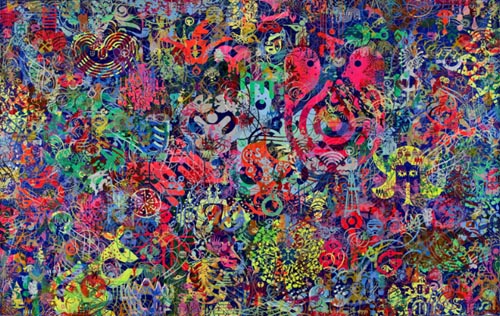Interview: Artist Ryan McGinness on Designing for Hennessy
His bright, graphic Very Special Limited Edition Bottle enters the canon of alcohol art
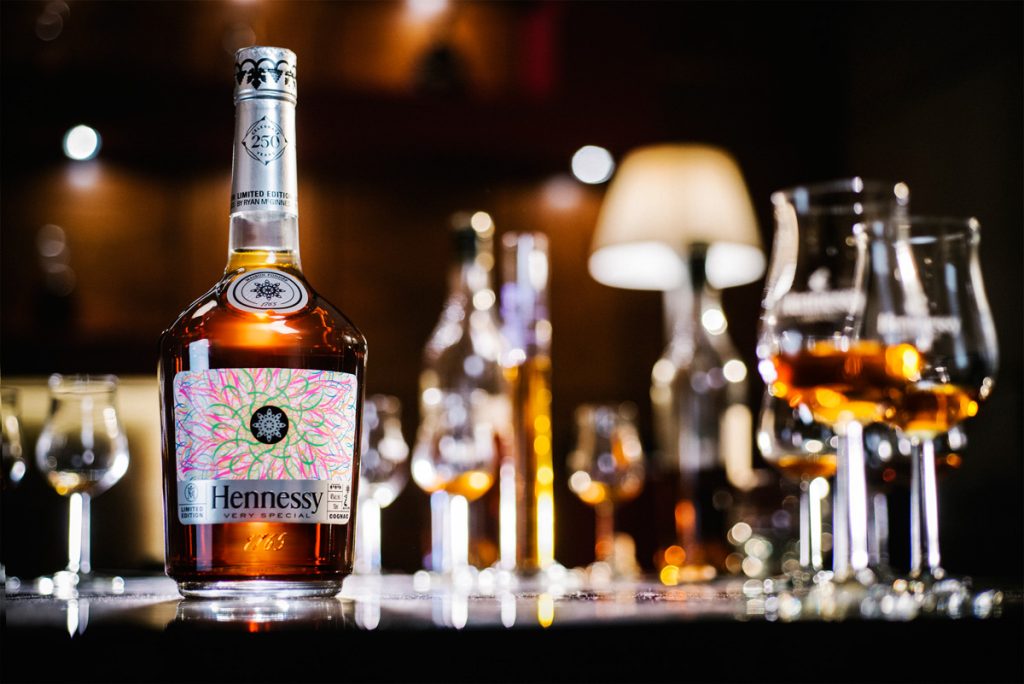
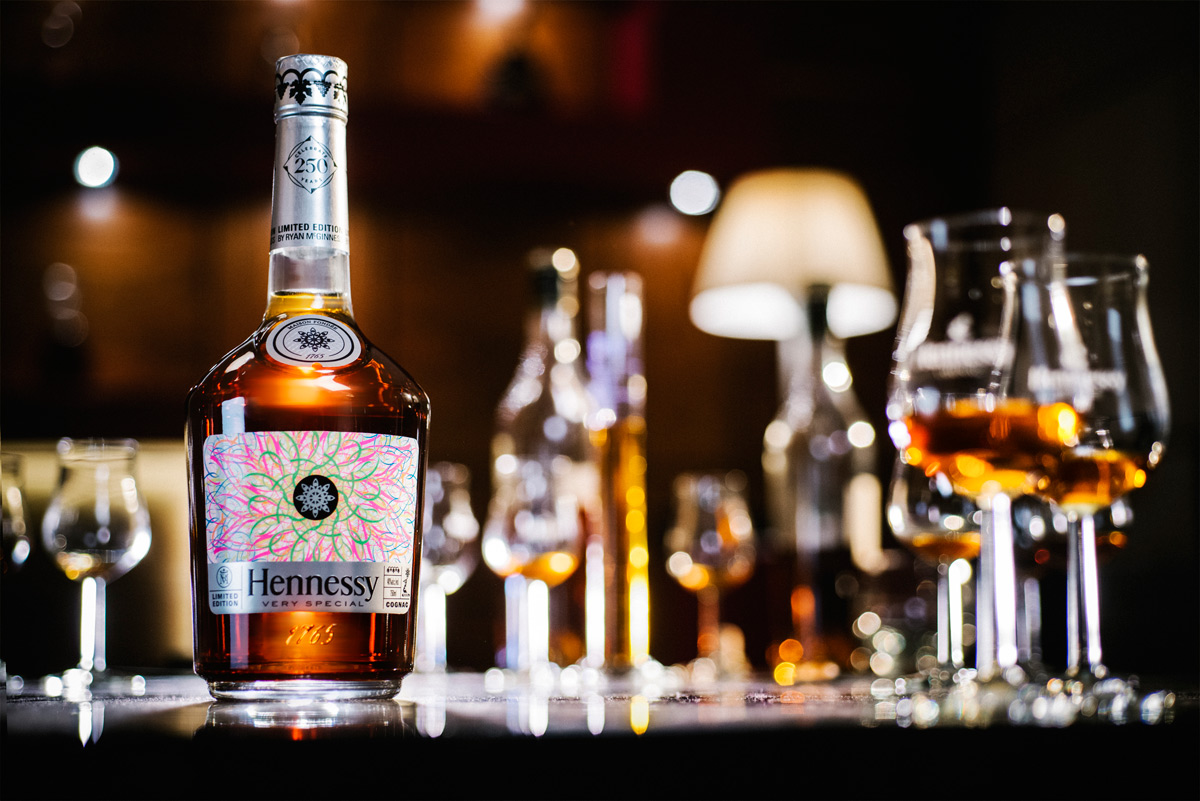
Despite the fact that he works across multiple artistic mediums, it’s very easy to discern the work of NYC-based artist Ryan McGinness. In addition to his iconic symbol-driven body of work, his experimental Instagram and the depths of his oftentimes ornate paintings, McGinness recently took to designing a special limited edition bottle for luxury cognac brand Hennessy. It’s the brand’s fifth artist partnership in five years, and falls during their 250th anniversary year. McGinness applied his signature “elements < compounds < mixtures” creation process to his black hole painting style, and the result is both visually stunning and a grand entrance for the artist into the world of designing for spirits. We spoke with McGinness to get his take on what this means as a creator.

There’s a long history of renowned artists partnering with spirits brands. Did this impact your approach or your work?
The tradition you reference didn’t really have an impact. What I think of immediately are the Absolut campaigns of the ’80s, which I was hyper-aware of. Warhol did one, Haring did one, Kenny Scharf did one. Those collaborations—and also what comes to mind, are the Swatch collaborations—were on my radar. But what influenced me more were the collaborations Hennessy had already done. Shepard Fairey, Futura and KAWS. I know all of those guys and called them and asked them what’s up and if I should do this.
Furthermore, when we got into the design process, I knew I wanted to do the exact opposite of what everyone else in the world does. I looked at those artists and saw a darkness. They were also masculine, so I wanted to do the opposite: something bright and celebratory, and even feminine. That’s how this came to be.
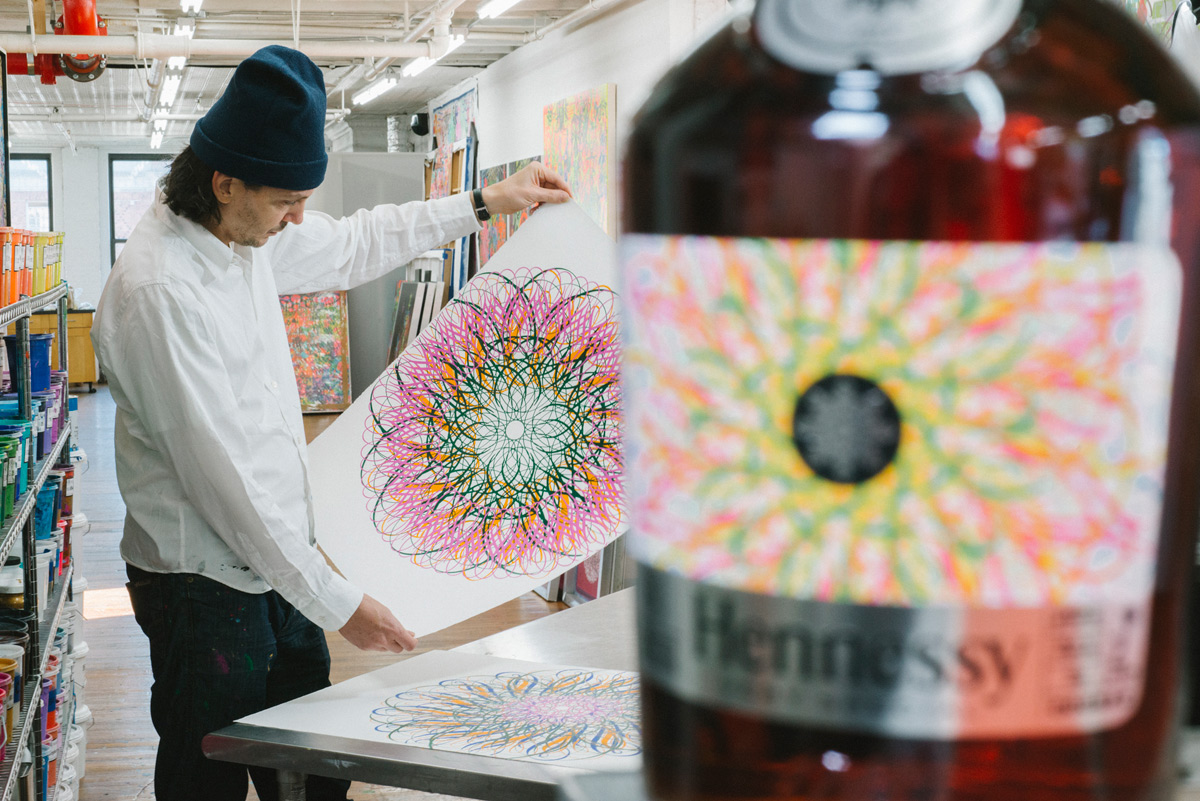
Can you talk about the process that went into making this very vibrant design?
At the very beginning of the design process—I work across many different bodies of work—I had to decide which body of work is the best match for this. It wasn’t going to be the figures I make. It wasn’t going to be what I call the “mindscapes,” which are very surreal and can be problematic based on interpretation. And it wasn’t going to be something from art history. It wasn’t going to be primitive art. But, I make these black hole paintings. For me, black hole paintings are all about symbols of wealth and fanciness and they employ these flourishes of fleur-de-lis that fold into themselves. I thought, well, I am investigating symbols of wealth and Hennessy is a luxury brand, so maybe this is a match.
Incidentally, those symbols of wealth that I am fascinated by, those flourishes, they all evolved from the visual language of heraldry and crests. You’ll find a lot of ivy and branches, and ornate natural images. That’s a visual element that’s already on the traditional Hennessy label, so I thought, let’s take this and push it further, until it’s almost like a contemporary version of that.

How long did the process take, from ideation to execution?
It was over a year in development. That isn’t to say I was working every day or even every week on it. A lot of this was about technical challenges to figure out regarding the printing. It’s an eight-color label: fluorescent green, blue, orange, yellow, pink, black, silver and then there’s an invisible ink color, visible only under black light. So, it’s an eight-color label, and that’s a real technical challenge for them to print. Furthermore, it’s really difficult to print all these fine lines.
And it’s not just the label but the packaging, the deluxe offer, which is two labels and two bottles and two coasters. There’s a book that comes with it. All of this was considered and had to be approved. Even the store displays. It’s a larger program than just a label.

With a design that’s so highly structured and ornate, how do you know when you’ve reached a sense of completion, and can’t go further into the flourishes?
Some of the initial designs included multiple black holes and we finally honed it down to one singular one. More to your question, though, how do we know how many colors and layers? It’s just trial and error. It is how I usually work in my studio. It’s trial and error, in the process, and finally seeing the magic of it all—and knowing. It’s more of a scientific approach.
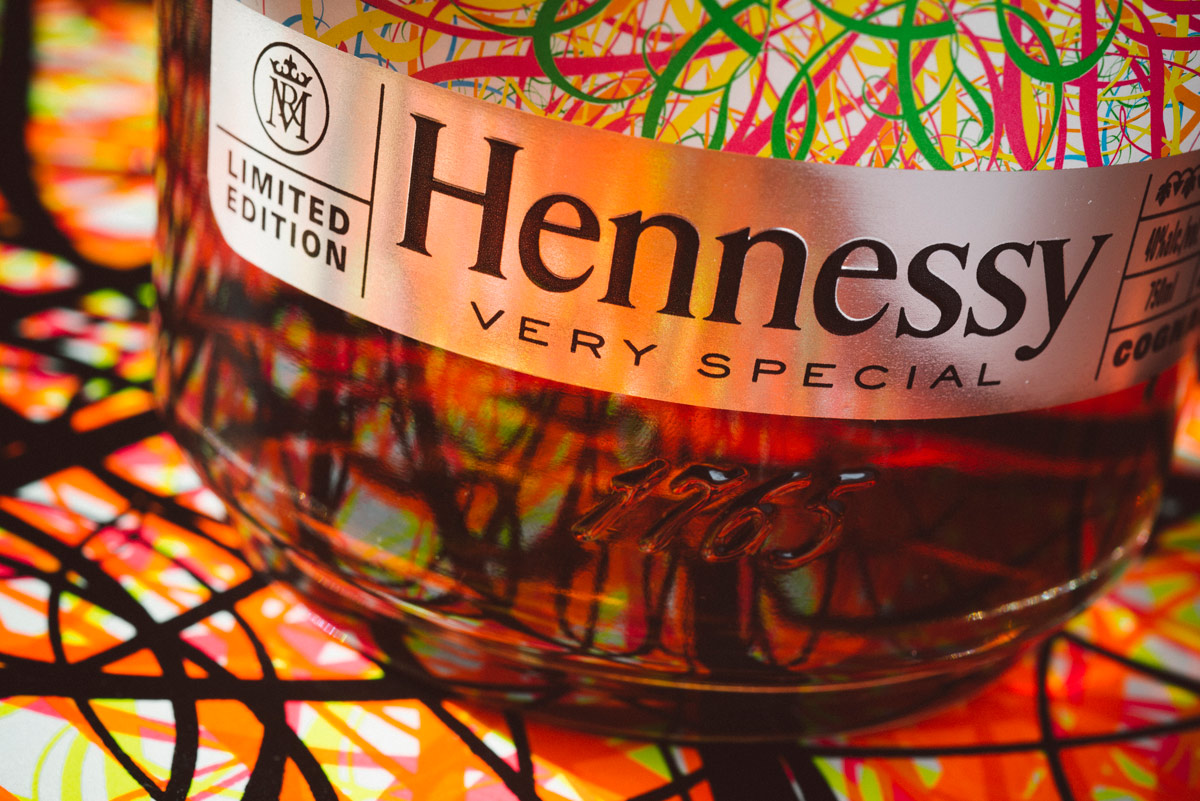
And what do you find inspiring?
Anything and everything. I am always making notes and I am always sketching. I’m always drawing. Something that sparks a drawing can be as simple as a pop song lyric or maybe a dream, or something someone said—or even an existing scene that I want to tweak or subvert in some way. None of those are satisfying answers, but that’s what it is.
Images courtesy of Hennessy

